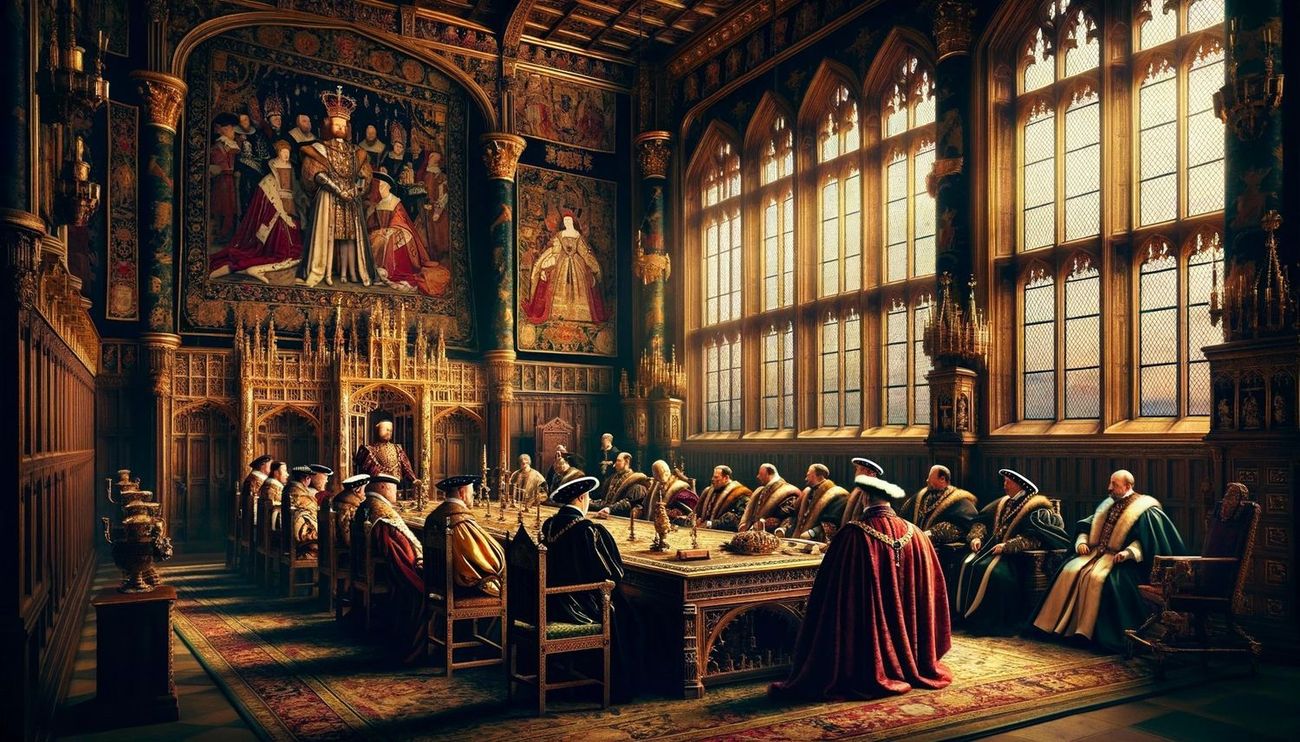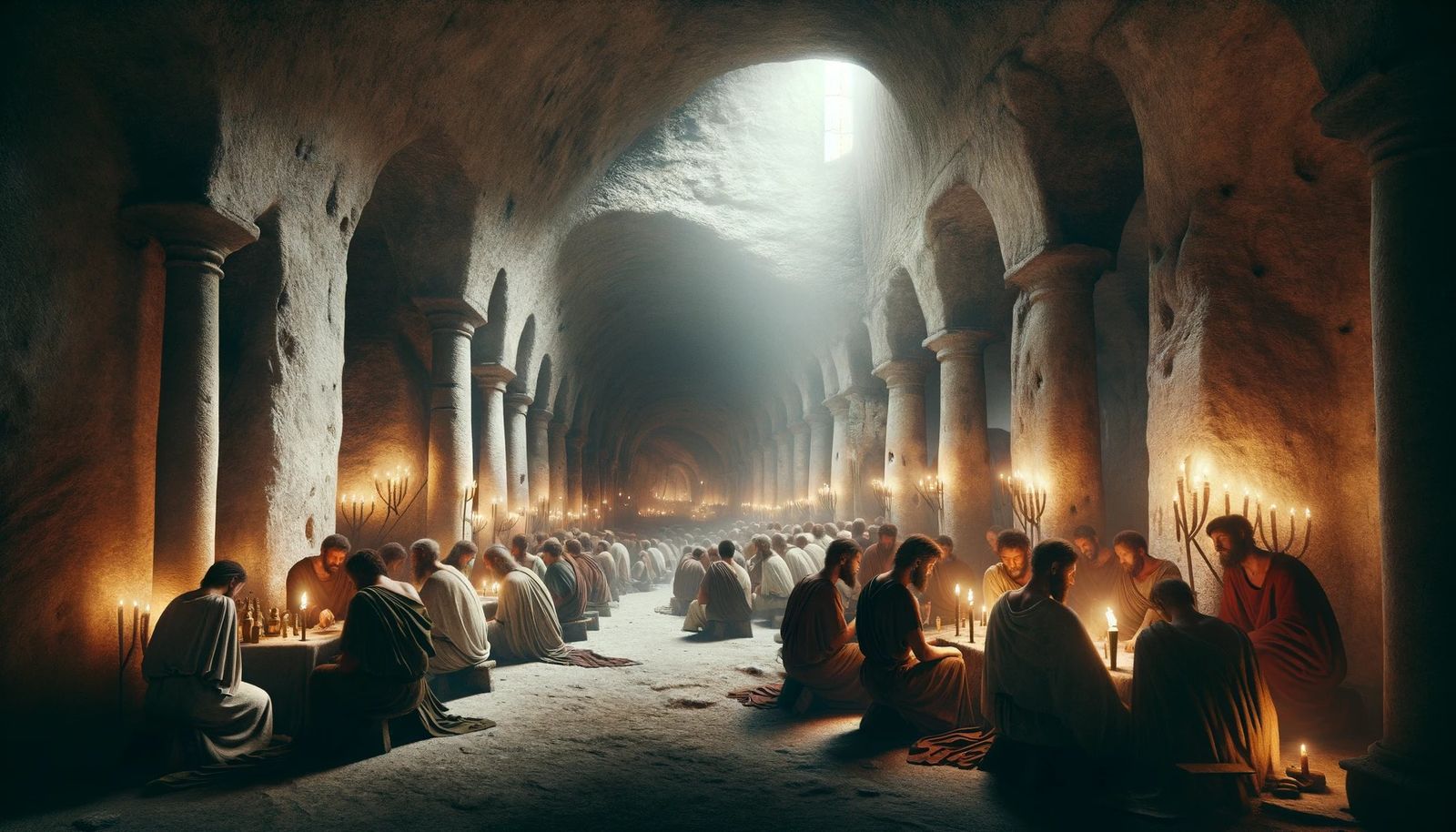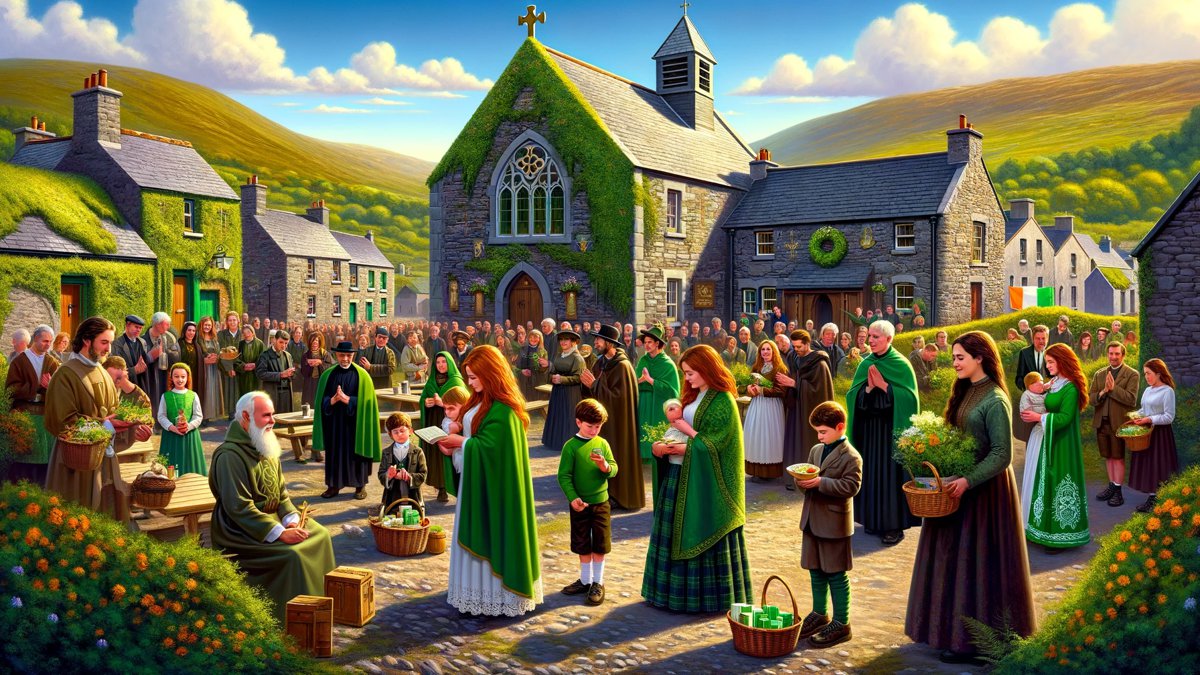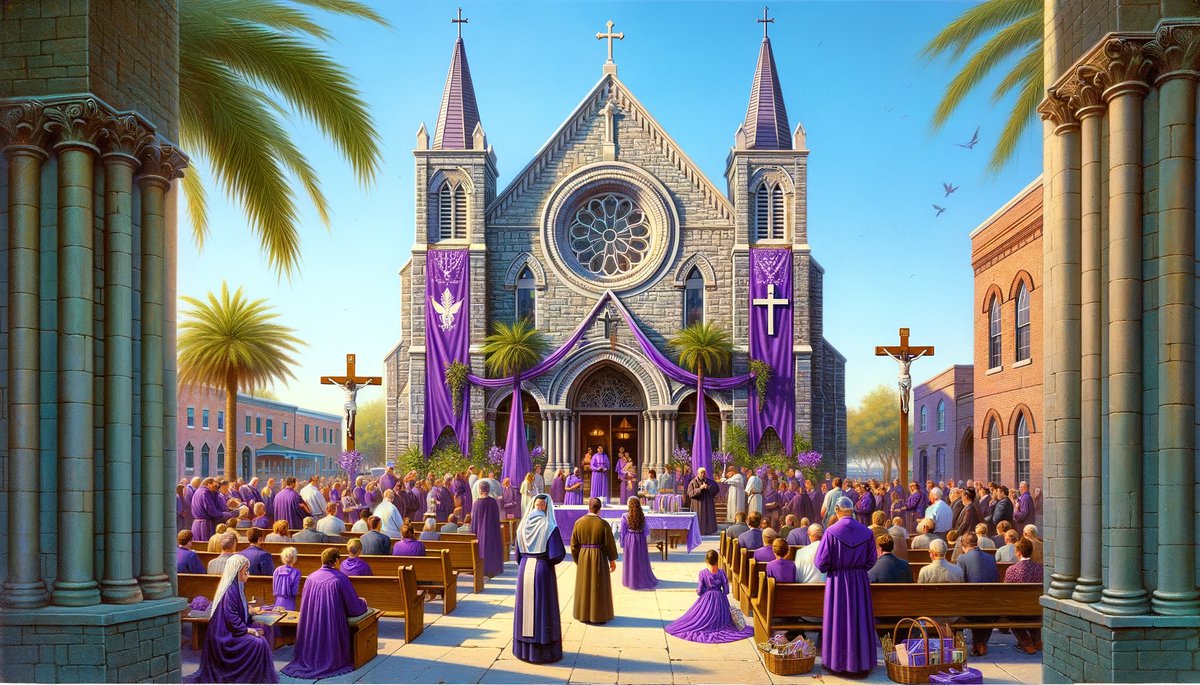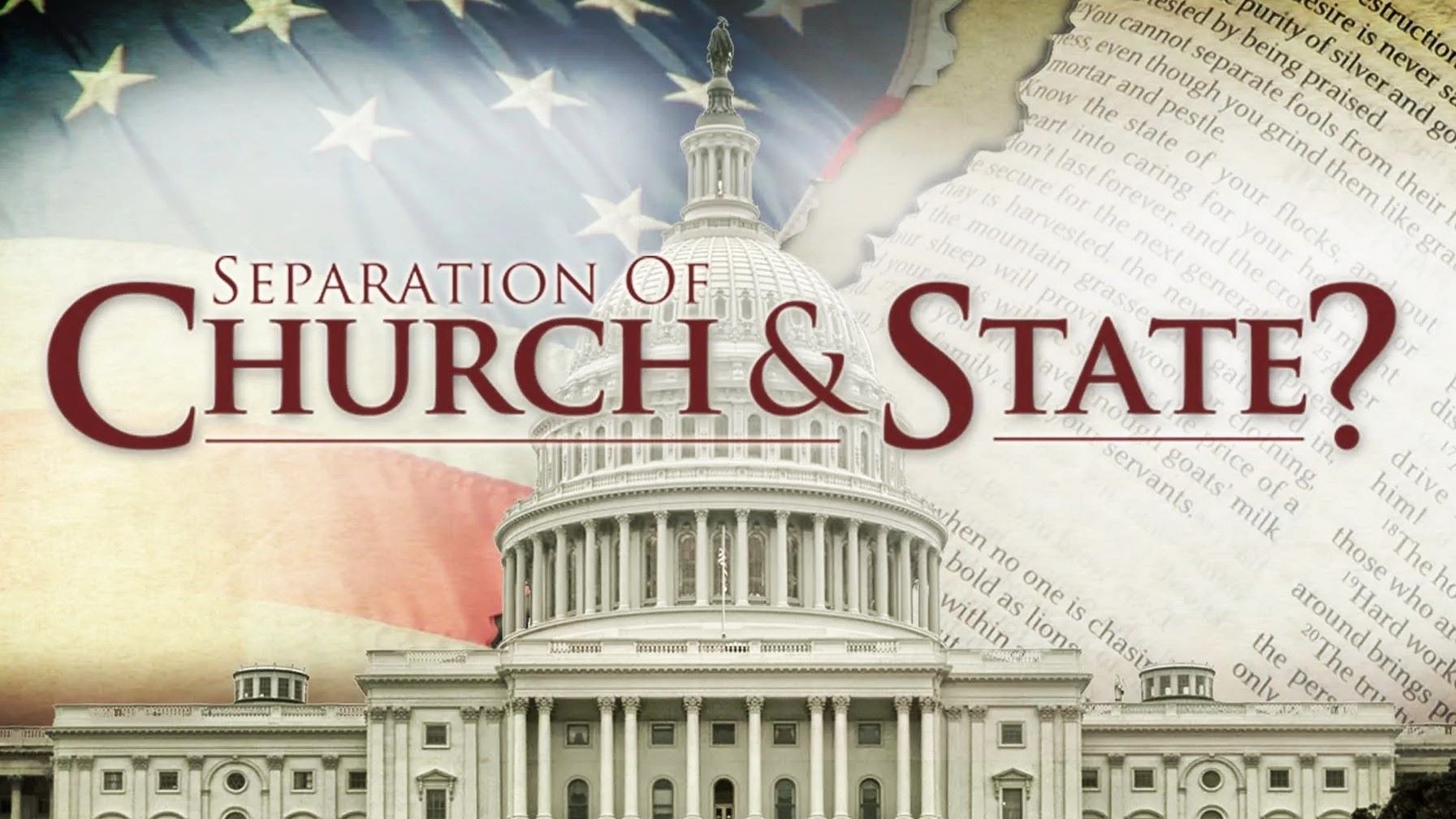Home>Theology and Spirituality>When Did Christianity Separate From Catholicism
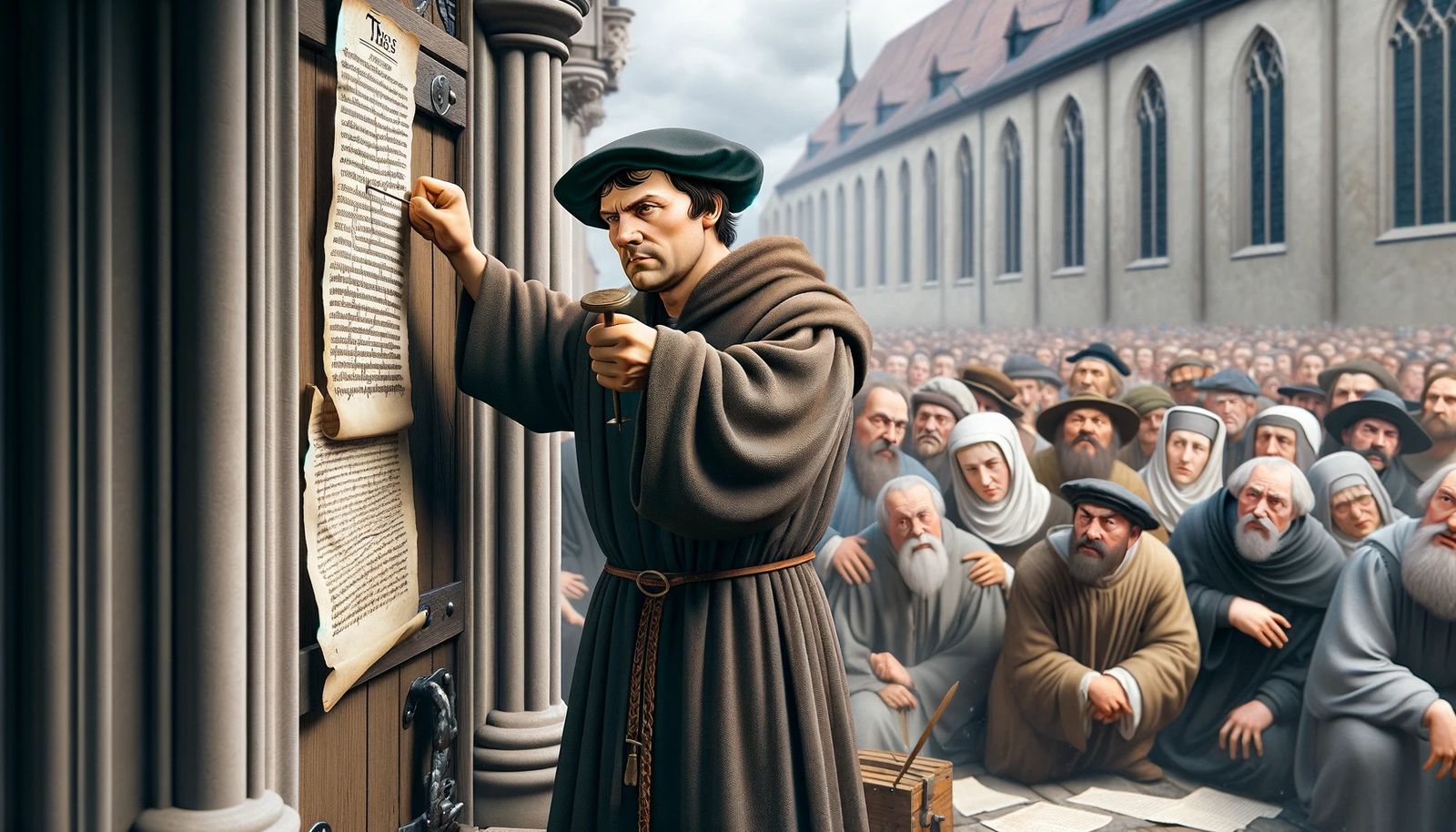

Theology and Spirituality
When Did Christianity Separate From Catholicism
Published: February 15, 2024
Jason DeRose, Managing Editor at Christian.net, uses his expertise in religion and journalism to deepen understanding of faith's societal impacts. His editorial leadership, coupled with a strong academic background, enriches the platform’s diverse content, earning him recognition in both journalism and religious circles.
Discover the historical and theological factors that led to the separation of Christianity from Catholicism. Explore the evolution of theology and spirituality in this significant religious schism.
(Many of the links in this article redirect to a specific reviewed product. Your purchase of these products through affiliate links helps to generate commission for Christian.net, at no extra cost. Learn more)
Table of Contents
Introduction
The separation of Christianity from Catholicism is a complex and multifaceted historical process that has significantly shaped the religious landscape of the Western world. Understanding the origins and evolution of this division is crucial for comprehending the diverse branches of Christianity that exist today. From the early days of the Christian church to the monumental events of the Great Schism and the Protestant Reformation, the journey of Christianity's separation from Catholicism is a compelling narrative that continues to influence religious beliefs and practices.
This article will delve into the pivotal moments and historical contexts that led to the divergence of Christianity from Catholicism. By exploring the early Christian church, the rise of the Roman Catholic Church, the Great Schism, and the Protestant Reformation, we will unravel the intricate tapestry of religious, political, and social factors that contributed to this profound schism. Through this exploration, we aim to shed light on the rich tapestry of Christianity's development and the enduring impact of its divisions.
The Early Christian Church
The early Christian church represents a pivotal period in the history of Christianity, characterized by the emergence and spread of the faith following the death and resurrection of Jesus Christ. This era, spanning from the 1st century to the 4th century, laid the foundation for the development of Christian theology, ecclesiastical structure, and religious practices.
Spread of Christianity
The early Christian church initially took root in the eastern Mediterranean region, particularly in Judea and Galilee, where Jesus had preached. Following the crucifixion and resurrection of Jesus, his disciples, notably Peter and Paul, played instrumental roles in propagating the teachings of Christianity. The missionary efforts of these early apostles led to the establishment of Christian communities in various parts of the Roman Empire, including Asia Minor, Greece, and Rome.
Persecutions and Resilience
Despite facing persecution and opposition from the Roman authorities, the early Christians demonstrated remarkable resilience and steadfastness in their faith. The martyrdom of prominent figures such as Peter, Paul, and numerous believers became a testament to the unwavering commitment of the early Christian community. This period of persecution, rather than stifling the growth of Christianity, served to galvanize and strengthen the resolve of its adherents.
Formation of Christian Communities
The early Christian church was characterized by a strong sense of community and fellowship. Believers gathered in homes and catacombs for worship, prayer, and the sharing of communal meals. These close-knit communities fostered a deep sense of solidarity and mutual support among the early Christians, providing a spiritual refuge in the midst of societal challenges and persecution.
Read more: When Did Catholicism Start In Spain
Doctrinal Development
As the Christian faith spread and encountered diverse cultural and philosophical contexts, the need for doctrinal clarity and theological articulation became increasingly apparent. This led to the formulation of key theological concepts and the writing of the New Testament scriptures, which served to codify the beliefs and practices of the early Christian church. Notable early Christian theologians, such as Ignatius of Antioch and Justin Martyr, contributed to the articulation of Christian doctrine and the defense of the faith against external criticisms.
Ecclesiastical Structure
The early Christian church operated within a decentralized organizational structure, characterized by the absence of a singular ecclesiastical authority. Instead, local congregations were overseen by elders and bishops who provided pastoral care and leadership. This diverse and decentralized framework allowed for a degree of flexibility and adaptability as Christianity continued to expand and encounter diverse cultural contexts.
The early Christian church laid the groundwork for the subsequent development and expansion of Christianity, setting the stage for the emergence of distinct theological traditions and ecclesiastical structures. The enduring legacy of the early Christian church continues to resonate within contemporary Christian communities, serving as a source of inspiration and historical continuity.
The Rise of the Roman Catholic Church
The rise of the Roman Catholic Church marks a significant chapter in the historical trajectory of Christianity. Following the conversion of Emperor Constantine to Christianity in the 4th century, the Roman Catholic Church experienced a transformative period of growth, influence, and institutional development. This pivotal era witnessed the fusion of religious authority with imperial power, shaping the identity and structure of the Catholic Church.
Imperial Patronage and Consolidation
Under the patronage of the Roman emperors, particularly Constantine and his successors, the Catholic Church experienced a newfound status and privilege within the Roman Empire. Imperial support facilitated the construction of grand basilicas, the convening of ecumenical councils, and the integration of Christian beliefs and practices into the fabric of imperial governance. The close alliance between the church and the state contributed to the consolidation of the Catholic Church's authority and influence.
Read more: When Did Catholicism Come To Scotland
Doctrinal Formulation and Councils
The rise of the Roman Catholic Church was accompanied by the formulation of key doctrinal tenets and the convening of ecumenical councils to address theological controversies. Notably, the Council of Nicaea in 325 and the Council of Chalcedon in 451 played pivotal roles in defining orthodox Christian beliefs, particularly regarding the nature of Christ and the Trinitarian doctrine. These doctrinal formulations provided a theological framework that solidified the identity of the Roman Catholic Church.
Papal Primacy and Authority
The ascendancy of the papacy as a central authority within the Catholic Church contributed to its institutional and spiritual cohesion. The emergence of figures such as Pope Leo the Great and the articulation of the doctrine of papal primacy bolstered the centralization of ecclesiastical power in Rome. The papacy's role as a unifying force and arbiter of doctrinal disputes further solidified the hierarchical structure of the Roman Catholic Church.
Sacramental and Liturgical Development
The rise of the Roman Catholic Church witnessed the elaboration and codification of sacramental practices and liturgical rites. The celebration of the Eucharist, the veneration of saints, and the development of sacramental theology enriched the spiritual life of the faithful and contributed to the distinctiveness of Catholic worship. The establishment of liturgical norms and the cultivation of devotional practices became defining features of the Roman Catholic tradition.
The ascendancy of the Roman Catholic Church during this period laid the groundwork for its enduring influence and global expansion. The fusion of religious authority with imperial patronage, doctrinal formulation, papal primacy, and sacramental development collectively shaped the identity and trajectory of the Catholic Church, setting the stage for its interactions with the broader Christian world.
This era of the church's rise established a foundation that would significantly impact the subsequent developments within Christianity, ultimately contributing to the complex tapestry of religious diversity and theological traditions that characterize the modern Christian landscape.
The Great Schism
The Great Schism, also known as the East-West Schism, represents a profound and enduring rupture within the Christian Church that significantly impacted the course of religious history. This pivotal event, which unfolded in the 11th century, led to the formal division between the Eastern Orthodox Church and the Roman Catholic Church, marking a definitive split between the Eastern and Western Christian traditions.
Doctrinal Disputes and Cultural Differences
At the heart of the Great Schism were doctrinal, theological, and cultural disparities that had been brewing for centuries between the Christian East and West. The divergent interpretations of theological concepts, such as the procession of the Holy Spirit and the authority of the papacy, fueled tensions and disagreements that ultimately culminated in the schism. Additionally, linguistic and cultural disparities between the Greek-speaking East and the Latin-speaking West contributed to a sense of estrangement and mutual incomprehension.
Papal Authority and Ecclesiastical Autonomy
The issue of papal authority and the scope of ecclesiastical autonomy emerged as a central point of contention during the Great Schism. The Roman pontiffs asserted their primacy and universal jurisdiction over the entire Christian Church, including the Eastern territories, while the Eastern patriarchs upheld the principle of conciliarity and the autonomy of their respective jurisdictions. This clash of ecclesial governance models exacerbated the growing rift between the Eastern and Western Christian communities.
Political Intrigues and Geopolitical Factors
The Great Schism unfolded against a backdrop of political intrigues and geopolitical factors that further complicated the already strained relations between the Eastern and Western Christian spheres. The influence of secular rulers, such as the Byzantine Emperor and the Holy Roman Emperor, intersected with the ecclesiastical dynamics, leading to power struggles and entanglements that exacerbated the schism. The intertwining of religious and political interests contributed to the entrenchment of the division between the Eastern Orthodox and Roman Catholic Churches.
Enduring Legacy and Contemporary Relevance
The Great Schism left an indelible imprint on the trajectory of Christianity, shaping the distinct identities and trajectories of the Eastern Orthodox and Roman Catholic traditions. The enduring legacy of the schism continues to reverberate within the contemporary Christian world, influencing inter-church relations, theological dialogues, and the broader ecumenical movement. Despite the enduring division, efforts towards reconciliation and mutual understanding persist, reflecting a shared aspiration for Christian unity amidst historical divisions.
The Great Schism stands as a poignant reminder of the complexities inherent in the historical development of Christianity and the enduring impact of theological, cultural, and geopolitical factors on the church's trajectory. This profound rupture within the Christian Church serves as a testament to the intricate interplay of faith, power, and human agency in shaping religious history and the diverse expressions of the Christian faith.
Read more: Where And When Did Catholicism Originate
The Protestant Reformation
The Protestant Reformation stands as a watershed moment in the history of Christianity, catalyzing profound transformations in religious, social, and political spheres. Emerging in the 16th century, the Reformation was a multifaceted movement that challenged the authority of the Roman Catholic Church and engendered the proliferation of diverse Protestant traditions. At the heart of the Reformation were theological, ecclesiastical, and societal grievances that fueled calls for reform and ultimately led to enduring schisms within Western Christendom.
The Context of Discontent
The backdrop of the Reformation was characterized by widespread discontent with the perceived corruption, opulence, and doctrinal deviations within the Roman Catholic Church. The sale of indulgences, the opulent lifestyles of clergy, and the centralization of ecclesiastical power in Rome became focal points of criticism among reform-minded theologians and laity. Additionally, the printing press facilitated the dissemination of reformist ideas, enabling a broader audience to engage with critiques of the existing religious order.
Martin Luther and the Ninety-Five Theses
The pivotal figure of Martin Luther, a German monk and theologian, emerged as a central catalyst for the Reformation. In 1517, Luther famously nailed his Ninety-Five Theses to the door of the Castle Church in Wittenberg, challenging the sale of indulgences and advocating for a return to the primacy of scriptural authority. This bold act of dissent reverberated across Europe, igniting fervent debates and laying the groundwork for the emergence of Protestant movements.
Doctrinal Reforms and Theological Divergence
The Reformation precipitated a reexamination of key theological doctrines, including salvation, grace, and the nature of the church. Luther, alongside other reformers such as John Calvin and Huldrych Zwingli, articulated theological perspectives that diverged from Catholic orthodoxy, giving rise to distinct Protestant theological traditions. Emphases on justification by faith alone, the priesthood of all believers, and the authority of scripture reshaped the theological landscape of Western Christianity.
Read more: When Did Catholicism Begin In America
Ecclesiastical Schisms and the Emergence of Protestantism
The Reformation engendered significant ecclesiastical schisms, leading to the establishment of various Protestant denominations and traditions. The Lutheran, Reformed, Anglican, and Anabaptist movements represented diverse responses to the perceived shortcomings of the Catholic Church, each embodying distinct theological emphases and ecclesiastical structures. The proliferation of Protestantism introduced a new chapter in the history of Christianity, marked by religious pluralism and doctrinal diversity.
Societal Impact and Political Realignments
The Reformation exerted profound societal and political ramifications, reshaping the fabric of European society. The translation of the Bible into vernacular languages facilitated widespread literacy and contributed to the emergence of national identities distinct from the authority of Rome. Additionally, the Reformation intersected with political dynamics, leading to conflicts such as the Thirty Years' War and the realignment of power structures across Europe.
The Protestant Reformation stands as a testament to the enduring impact of religious reform movements and their capacity to reshape the contours of faith, society, and culture. The legacy of the Reformation continues to resonate within contemporary Christianity, underscoring the enduring influence of its theological, ecclesiastical, and societal ramifications.
Conclusion
The historical trajectory of Christianity's separation from Catholicism is a rich tapestry woven with theological, ecclesiastical, and socio-political threads. From its early roots in the diverse communities of the early Christian church to the rise of the Roman Catholic Church, the Great Schism, and the Protestant Reformation, the evolution of Christianity reflects the dynamic interplay of faith, power, and human agency.
The early Christian church, characterized by its resilience in the face of persecution and its doctrinal and ecclesiastical development, laid the foundation for the subsequent growth and diversification of Christianity. The rise of the Roman Catholic Church, marked by its fusion with imperial patronage, doctrinal formulation, papal primacy, and sacramental development, established a dominant ecclesiastical force with enduring global influence.
The Great Schism, a definitive rupture between the Eastern Orthodox and Roman Catholic Churches, underscored the complexities of doctrinal disputes, ecclesiastical autonomy, and geopolitical factors within the Christian world. This schism continues to shape the distinct identities and trajectories of these traditions, while also inspiring ongoing efforts towards reconciliation and unity.
The Protestant Reformation, ignited by theological discontent and societal upheaval, engendered profound doctrinal reforms, ecclesiastical schisms, and societal transformations. The emergence of diverse Protestant traditions and the realignment of political structures reshaped the religious and cultural landscape of Europe and beyond, leaving an indelible imprint on the course of Christian history.
In conclusion, the separation of Christianity from Catholicism reflects the enduring dynamism and complexity of religious development. The diverse branches of Christianity that have emerged from this historical process bear witness to the enduring impact of theological, ecclesiastical, and societal forces on the faith and practice of believers. As the journey of Christianity continues to unfold, the legacy of its historical divisions serves as a reminder of the ongoing quest for understanding, unity, and the enduring relevance of faith in the human experience.


